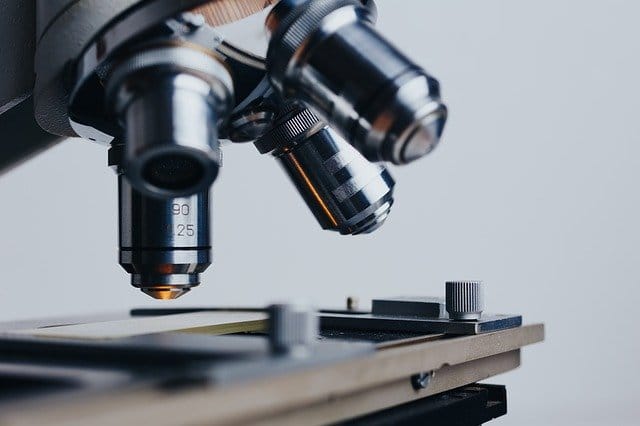Last week we informed about the existing variety of definitions for nanomaterials (NM) among the different EU-regulations. As previously indicated these differences do also have a direct impact on the data to be evaluated under the respective regulation. Together with a selection of NM definitions, this information was previously published by the VdMi. Today, we want to share these definition induced consequences and some further nano specific requirements with you. Thereby we again focus the EU-regulations of:
- Biocides
- Chemicals (REACh)
- Cosmetics
- Food
- Medical devices
In case there are NM (according to the respective definition) part of the biocidal product, a separate approval, further labeling requirements and special information requirements in the application for active substances have to be considered.
Biocidal products containing NM require a separate approval in which risks to human, animal and environmental health are assessed. A simplified authorization procedure is not possible (see Article 25). Further, the product must be identified with the addition “(Nano)” on the label (each time mentioned). Any potential nano-specific risks must be indicated.
Also further information on the methodology must be provided in the application (of the a.i.). These include::
- Reasoning for the suitability of the measurement methods used or any necessary changes made
- Principles for the evaluation of the biocidal products need to be adapted and supplemented by technical guidelines
The report of the member states on the implementation of the Biocide Regulation need to contain information on the use of NM in the product and their potential risks.
Chemicals
As a consequence of the NM definition under REACh, nanoforms have to be recorded separately in registration dossiers.
In one of our latest blog entries we informed in detail about the need of substance identification and respective data evaluation for nanomaterials under REACh. In the following you’ll find a brief overview of REACh information requirements:
According to ANNEX VI, VII and IX these physical chemical parameters need to be considered for each nanoform or sets of nanoforms.
Morphological characterization
- shape / form
- aspect ratio
- crystallinity
- secondary structure (assembly structure)
Surface treatment
- description of surface functionalisation or treatment
- identification of each agent including IUPAC name and CAS or EC number
Size and area
- number based particle size distribution
- indication of the number fraction of the constituent particles in the size range 1-100 nm specific surface (volume or mass)
Solubility
- dissolution rate
- assessment of dispersion as confounding effect
Partition coefficient octanol/water
- dispersion stability to be considered when KOW is not applicable
Dustiness
Additional information on phys. chem. properties
Also further specific information on exposure- hazard- and risk assessment of each nanoform / set of nanoforms need(s) to be provided separately (if applicable) according to REACh ANNEX V,VI, VII, VIII, IX and X. These consider:
Human health
- in vitro gene mutation study in bacteria
- acute toxicity by oral route
- acute toxicity
- short-term toxicity with repeated administration
- sub-chronic
- toxicokinetics
- assessment of the toxicokinetic behaviour of the substance to the extent that can be derived from the relevant available information.
Environmental health
- short term toxicity in invertebrates
- grow inhibition study on aquatic plants
- short term toxicity testing on fish
- activated sludge respiration inhibition testing
- degradation
- hydrolysis as function of pH
- adsorption desorption screening (further information on adsorption desorption depending on the results of the study required in Annex VIII)
- simulation testing on ultimate degradation in surface water
- bioaccumulation in aquatic species, preferably fish
- effects on terrestrial organisms
More information can be found here on the EUON webpage of ECHA.
There are special labelling and information requirements.
Each component meeting the cosmetic NM definition needs to be labeled as a “nano” ingredient. Also, more information has to be provided in the notification
Such products including NM that are authorized as colourants, UV light filters or conservatives (Article 14, entries in Annex IV, V or VI) only need to be notified according to Article 13. Also here the required information on the NM need to be provided.
Notification to article 13
- IUPAC name
- descriptors according to Number 2 of the preamble to the Annexes II – VI
- predictable exposition conditions
This does not apply if NM in accordance with the requirements of Annex III (restricted substances) are used or if there is no authorization for the NM according to Article 14. In these cases, they must be notified in accordance with Article 16.
Notification to article 16
- IUPAC name
- descriptors according to Number 2 of the preamble to the Annexes II – VI
- particle size
- phys. chem. properties
- quantity estimation
- toxicological profile
- predictable exposition conditions
In case of any concerns, the commission can request an opinion from the Scientific Committee on Consumer Safety (SCCS).
Food
Within in the novel food regulation (NFR) and the regulation on provision of food information (RPFI) consequences of the NM definition adhere to
- Special information requirements in the application for approval (NFR)
. - in the application for approval -> justification for the suitability of the measurement methods used or, if applicable, any changes made must be provided. - Labeling with “nano” (ingredients list) (RPFI)
Medical devices
With regards to the authorization of NM within medical devices: Here are specific requirements as it comes to a higher classification.
- If NM are used, the risk of particles penetrating the skin must be reduced
. - especially - especially if the application is not limited to intact skin -> a separate classification rule (No. 19) applies. - non signifcant potential for internal exposition → medical device class IIa
- low potential for internal exposition → medical device class IIb
- medium or high potential for internal exposition → medical device class III
The possibility for an assignment to the medical device class I is not given anymore. Thus the conformity assessment must be carried out by an independent testing or certification institution and must no longer be carried out by the manufacturer.
Looking for an expert in the nano field? Contact us via phone: +49 6346 9661490 or mail!
Latest update of this blog entry: 23rd of February 2021
This post does not permanently raise claim for completeness and topicality of regulations.
Image from Konstantin Kolosov at Pixabay




